I tried so many pasta dough recipes until I found my favorite one.
You might wonder what’s in to like or not to like in a pasta dough? It’s just flour and egg
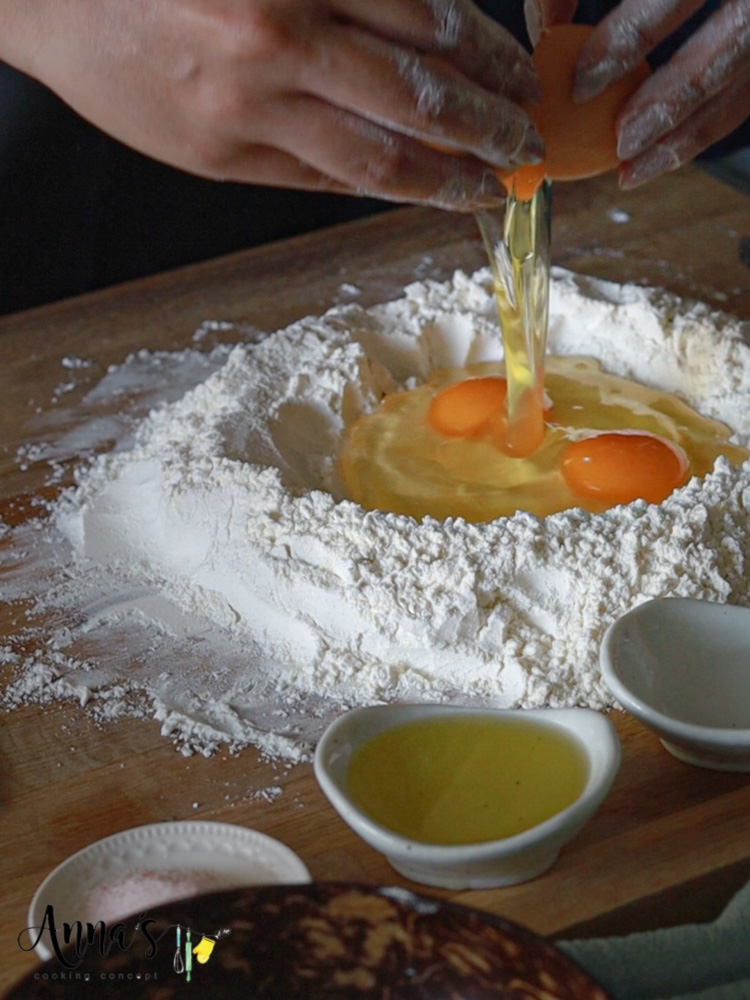
Well it is not that simple. there is so many recipes out there with different kind of flour and with egg or egg yolk only and with other ingredients.
I tested many ones and landed at this one, I found it the easiest yet have a good texture so the sauce stick on the pasta.
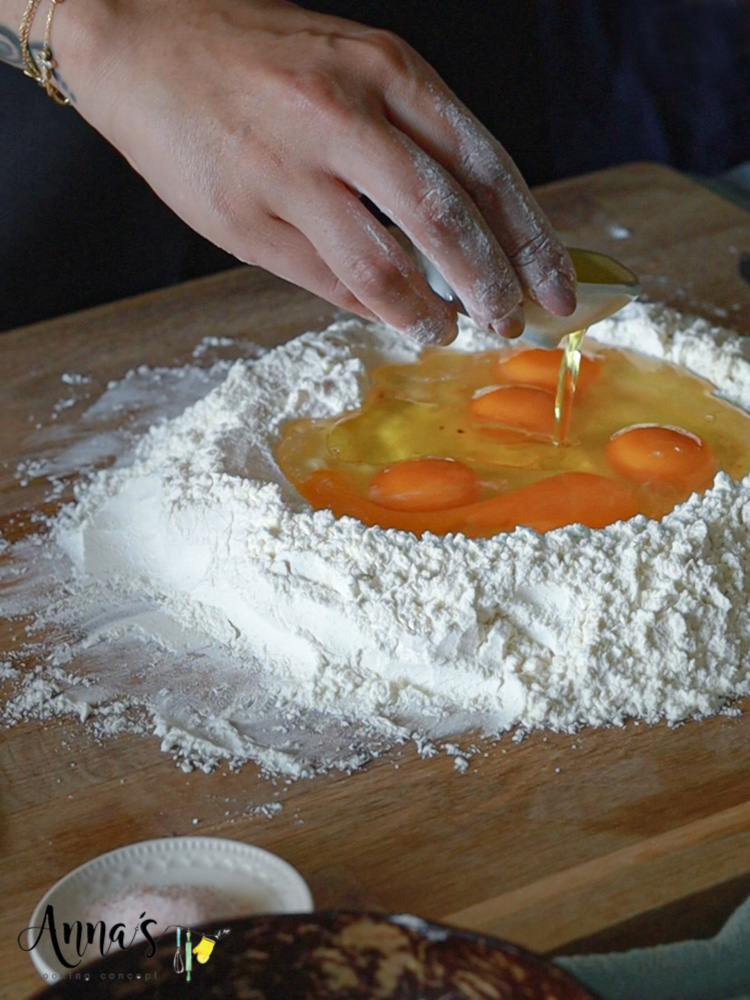
Flour combination:
I used a combination of two type of flour all-purpose white flour and semolina. it ‘s like 90% all-purpose and 10% semolina you can do it all with only all-purpose but the semolina add a beautiful texture and help the sauce of your pasta stick to the dough.
Egg:
Now for the eggs, I try to use fresh free-range egg but you can use any egg you want. I used the whole egg, some recipes use only the yolk for a richer deep yellow colour but I found that it easier to work with the dough if I use the whole egg, especially if I am doing the dough by hand like in the video.
Why I put white vinegar?
I found that white vinegar always help with the egg especially when you are working with raw eggs like in this recipe so I always like to add little white vinegar to the mixture, it will help you with avoiding any egg smell especially if you ae not using free range fresh eggs.
Olive oil:
I like to add few tablespoons of virgin olive oil to my dough I found that it adds an earthy delicious taste to the dough and help with the texture of the dough.
Liquid/ flour ratio:
Whatever flour combination you choose, eggs or liquid you want to add always use this ratio to have always a successful pasta dough for every 450 g of dry ingredients (flour) you need 255 g of liquid (egg,oil,vinegar, …) . so, if you want to experiment with egg yolk or some other addings make sure to keep this ratio and you are good to go!

Making the dough by hand vs by machine:
I want to highlight this point because I tried both and I know many would disagree with me but this is my personal opinion. I tried this dough by hand and with a food processor and both ways gave me great results. For me I prefer to do it in food processor because it is faster and less pressure to my weak hands and honestly with a baby on my hand each minute is precious so saving time by kneading the dough in food processor is a great deal for me! you can do it by hand as you see me doing it in the video or you can do it in the food processor.

Simply add all the ingredients in the food processor and pulse. Don’t turn it on continuously, just pulse for 2 seconds stop for one for about 15 seconds until the mixture reach a crumbly texture and when you press it between your fingers it sticks together. Remove the ball and pat it into your hand to form a ball, place into a floured surface and knead just for couple of minutes until you have a smooth dough. And continue the rest of the instructions same as below in the recipe card.
Both case if by hand or food processor if you find that the dough is still little stiff or hard to work with don’t worry , I found that there is no need to add more flour at this point because when the dough rest it will be much softer and easy to work with .

Rolling the pasta machine vs by hand:
Now for rolling the pasta I have a pasta machine that help me roll my dough into lasagne sheets or noodles or tagliatelle but if you don’t have the machine it doesn’t mean you can’t do it by hand , you totally can and it is still so much fun maybe more fun also by hand, it can be an activity for the whole family making dinner from scratch.
So instead of using the machine you need to use a simple rolling pin. Generously flour both side if the sheets with some flour and out the dough into a rectangle kind of shape , keep rolling out the dough until it reaches your desired level of thickness , generally you should be able to see your hand through the dough sheets.

Shapes of pasta:
Either if you are using the machine or your hands there three basics shapes of pasta that you surely do. by hand there is endless shapes that you can try but starting with the basics: lasagne sheets , tagliatelle and noodles (spaghetti).
If I am doing lasagne I like to always make my sheets a little thinner than the sheets of tagliatelle or noodles. I like to make thinner sheets and more layers when I am assembling my lasagne. It is yet another personal preference , it is aesthetically more beautiful for me.
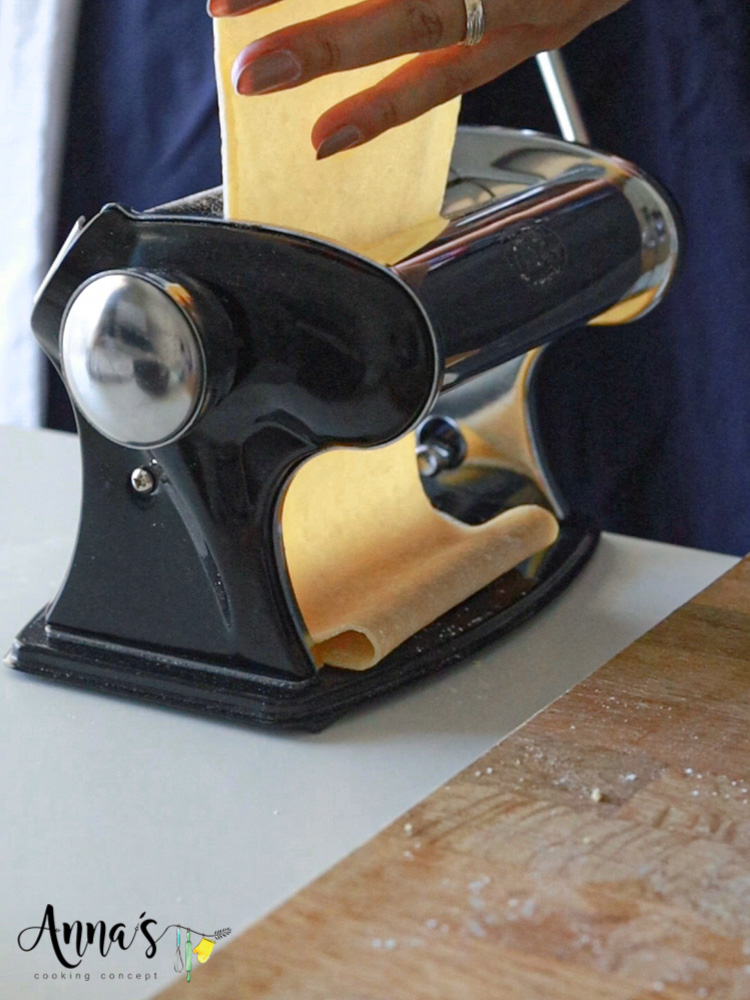
After you roll out the dough you can from here make your lasagne sheet by cleaning the edges and cutting into rectangles shapes that can fit in your baking dish or you can make other shapes.
If you want to make some tagliatelle or noodles simply roll your sheets into loose cylinder and with a very sharp knife start cutting cross wise your noodles to the width that you like.
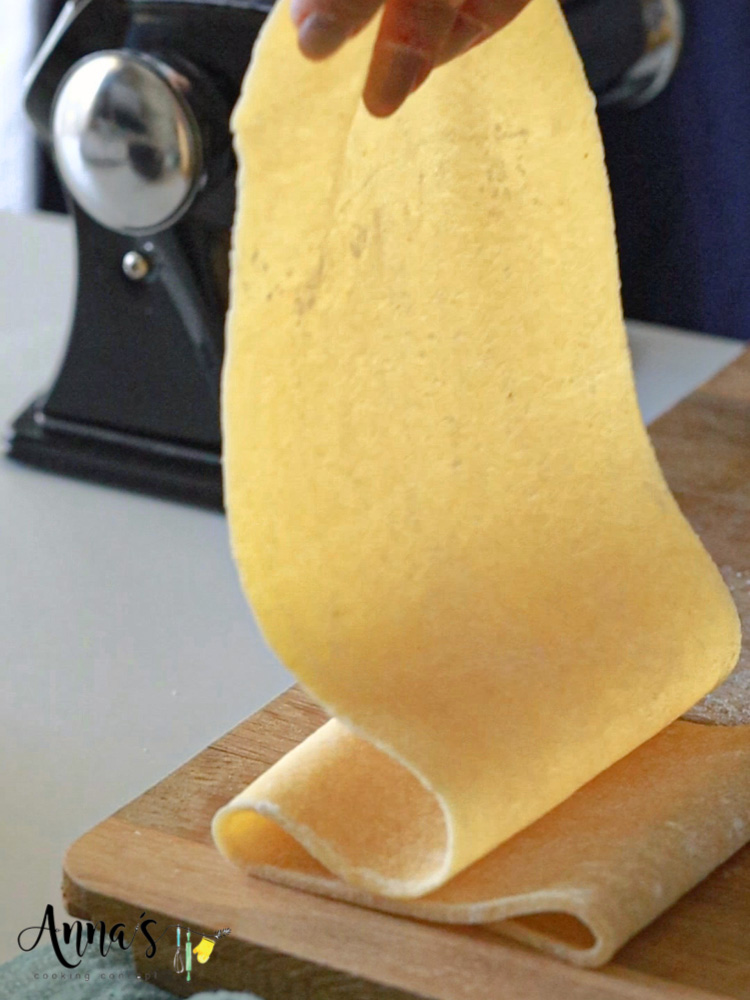
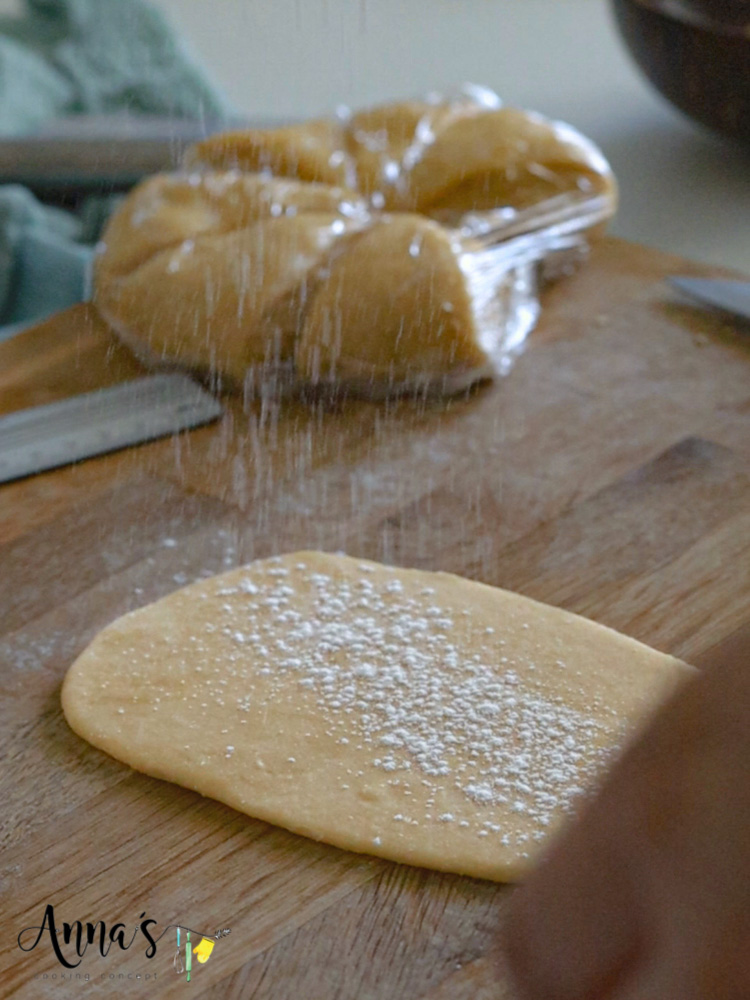
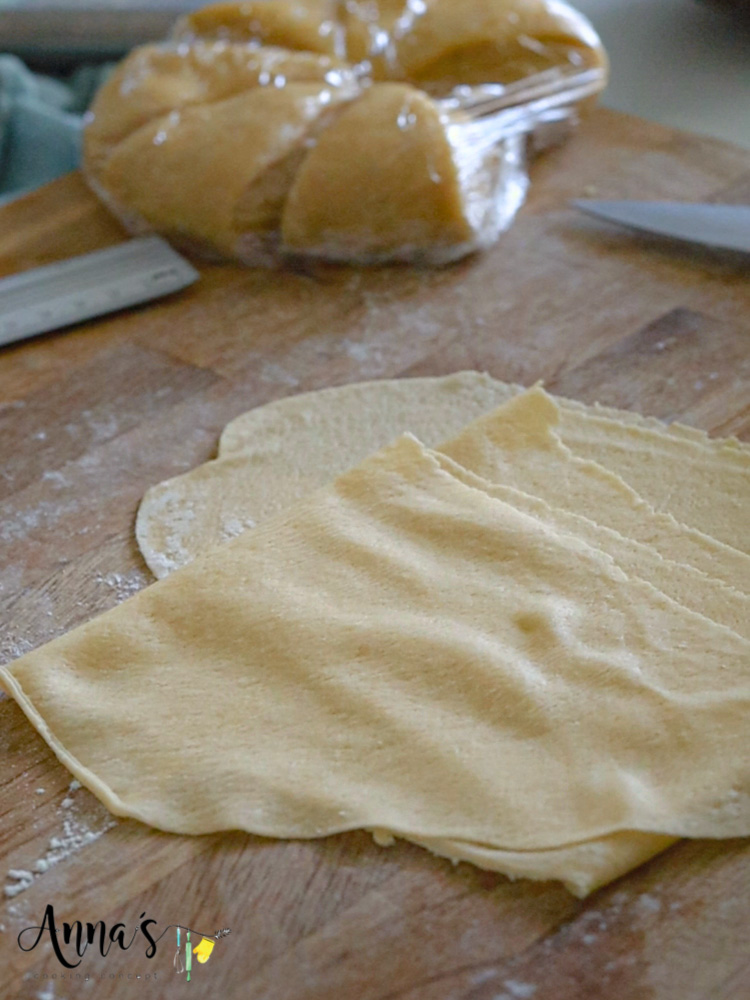
You can dry the pasta in a drying rack of you have one or you can roll them into a nest and lay on a floured surface to dry.
Those are my few notes and tips so you can make pasta dough from scratch no matter how advanced you are in your cooking skills or in your kitchen equipment.
In the video if this recipe I tried a new seafood filling that I am going to share with you later, but you can totally make this with a meat sauce.
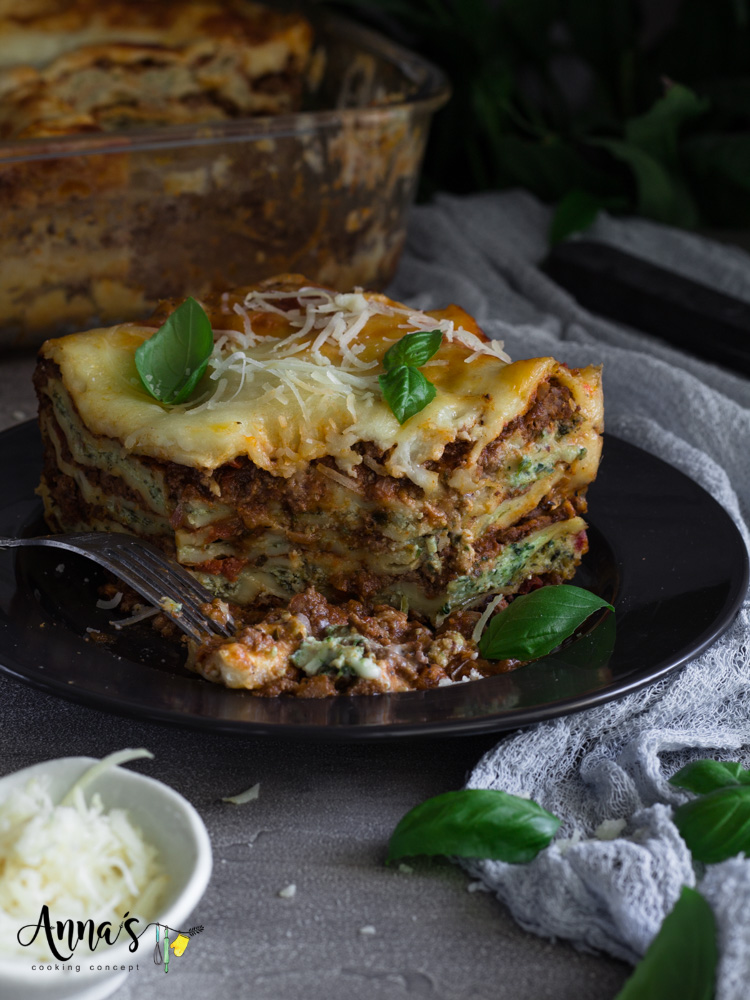
I tried it before with my delicious Bolognese meat sauce and turned out amazing. You can make it also into ravioli shapes, try my delicious fresh ricotta ravioli with fid butter sauce recipe very interesting! And you can also try my healthy pumpkin ricotta lasagna recipe also with this dough

Bolognese meat sauce 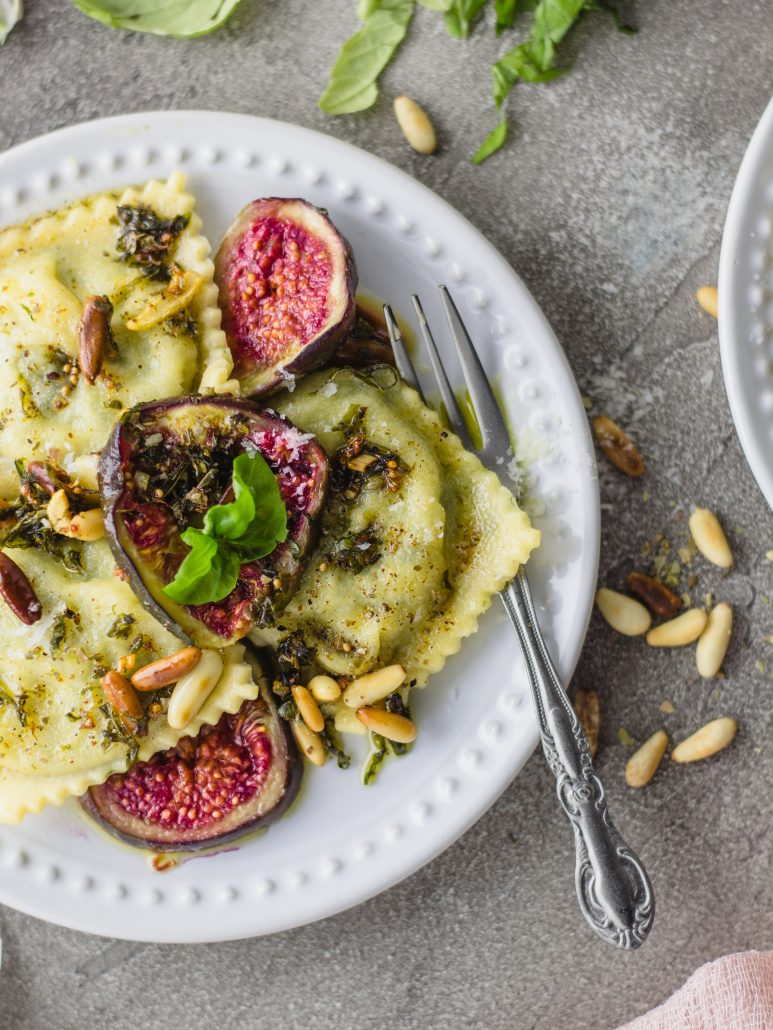
fresh ricotta ravioli with fig butter sauce 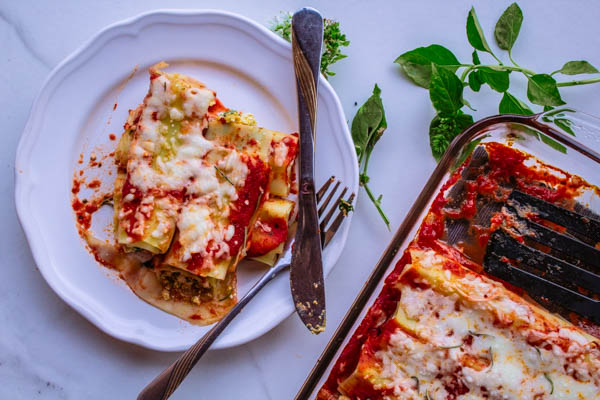
fresh ricotta pumpkin lasagna rolls
Or you can also shape into noodles of your choice and serve it as a side dish with my delicious greek chicken pastitsada recipe. it will taste amazingly good also with some of my tamarind meatballs on top .

Greek chicken pastitsada 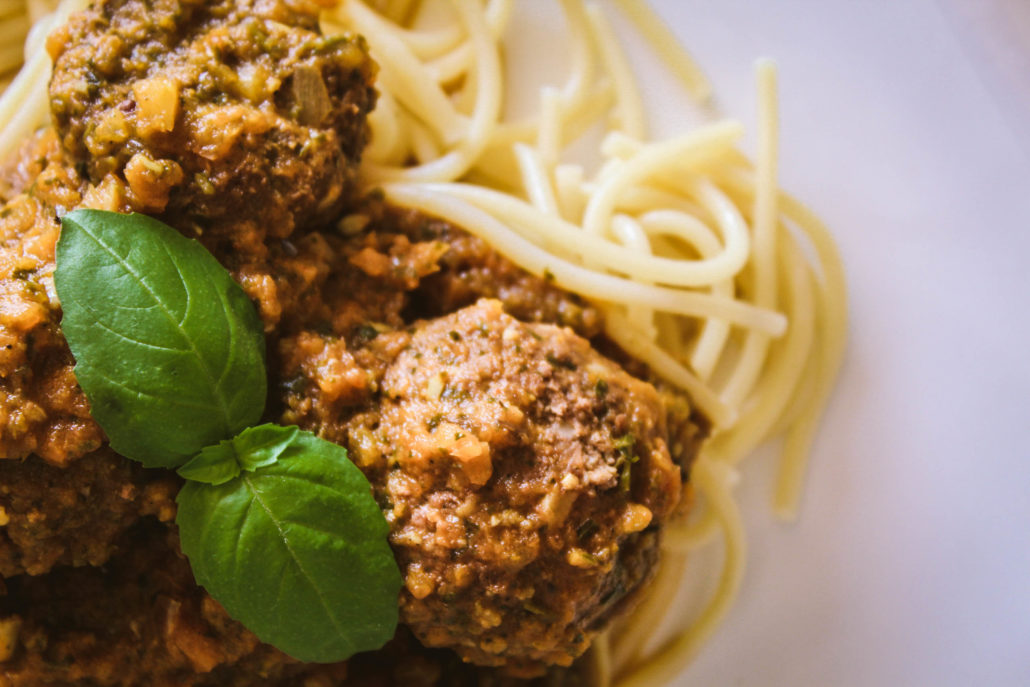
tamarind meatballs pasta 
tamarind meatballs
you can also enjoy it cold with my refreshing cold creamy tahini sauce , this one is addictive! with some refreshing pesto sauce or with my delicious smoky vegan red pepper sauce And many more delicious pasta and pasta sauce recipe that you can get inspired by from my blog.

refreshing tahini pasta sauce 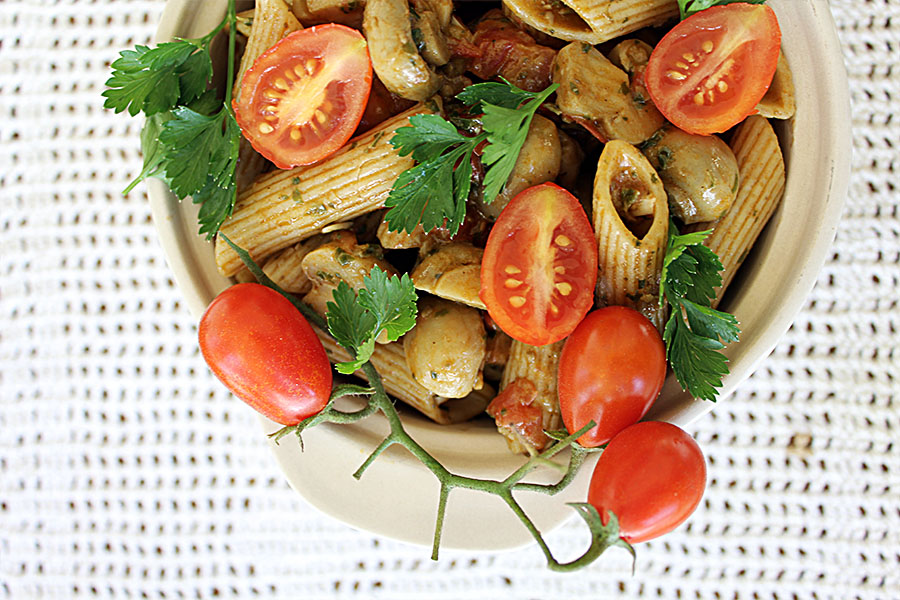
pesto pasta 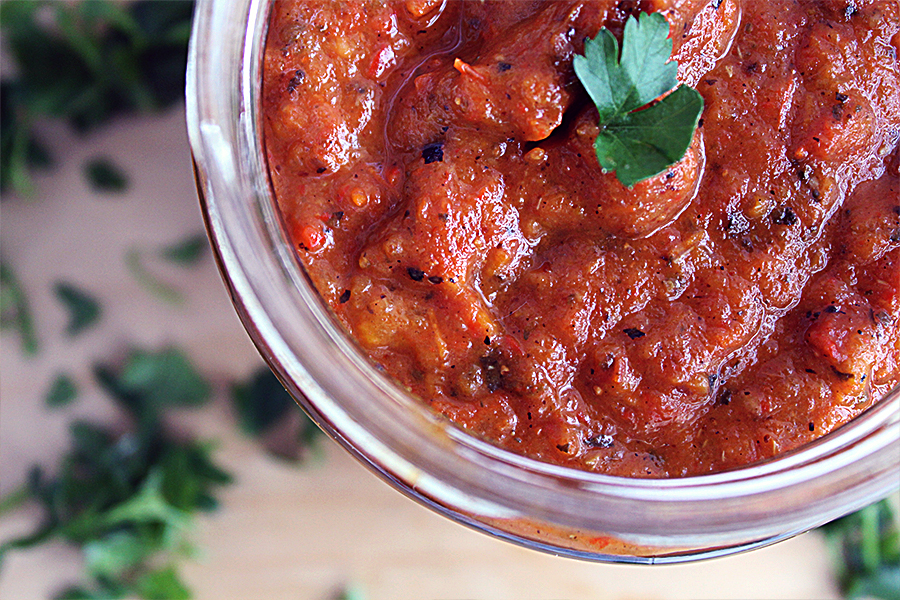
smoky roasted pepper sauce
I would love to see your creations with this pasta dough. don’t forget to snap a picture and tag us on #annacookingconcept !
Homemade pasta dough
Equipment
- pasta machine
Ingredients
- 400 g all-purpose flour
- 50 g semolina flour
- 5 eggs
- 2 tbsp olive oil
- ½ tbsp white vinegar
- Dash of salt
Instructions
- Mix the two flours together and form a mound on a large cutting board or your clean counter top . create a well in the middle with your fingers, a big one to fit the eggs in.
- Add the eggs with the vinegar and oil and dahs of salt in the well.
- With a fork gently whisk the egg mixture till combined. Then begin to slowly whisk some of the flour from the edge f the well into the egg mixture. If some eggs accidently spill out of the well don’t worry! It happens with me all the time, use a bench scraper or you hands to pull them back in.
- Keep gradually adding flour and whisking until you have a thick egg mixture, use your hands to fold in the rest of the flour when you cannot whisk with a fork any longer. And knead until the dough is smooth, elastic and not sticky anymore , you will need around 10 minutes to reach that.
- Form the dough into a smooth ball wrap it in plastic wrap and let it rest for minimum 30 minutes before you use. or you can refrigerate to use the next day if you want to do this in advance.
- After the dough rest, cut it into smaller quarters so it will be easier to work with. Take on piece to roll out and cover back the rest to keep them from drying out while waiting to be rolled.
- With your hands roughly shape the dough into oval shaped disc that will bi thinner and easier to feed to the dough machine. Flour both side and feed the dough to your pasta maker on the widest settings. Then fold it into thirds so you have a more rectangular shape and feed it again on the same widest settings to your machine. Repeat that for 2 to 3 times until you have a good shape. Then gradually reduce settings to thinner and feed the dough to the roller , pass the dough in each setting twice then reduce keep doing that until you reached your desired thickness. Once done flour both sides and lay on flour surface while you continue the remaining dough.
- If you are making noodles connect the attachment of the shape you want and roll your sheets into it to cut it into spaghetti or noodles or tagliatelle shape.
To cook the pasta:
- If you are preparing this for lasagne once you roll out your sheets and cut into smaller rectangles that fits you baking dish , there is no need to precook the sheets, they will cook with the sauce while baking.
- If you are preparing other pasta dishes with tagliatelle, noodles or spaghetti , it depends on the thickness of your noodles . cook the pasta in a large pot of very salted water until it is al dente that usually between 1 to 5 minutes depending how thick your pasta shape is. Drain and use immediately in your sauce of your choice.
To store fresh pasta:
- The must important art is to dry the pasta until it cracks when you press between your fingers. Let it air dry on the special rack on any floured baking sheets from 2 hours to 12 hours depending on the weather where you live. And store in airtight container for up 2 days in fridge and 2 weeks in freezer. to thaw from freezer, just remove and put to thaw slowly in the fridge for 4-6 hours then cook like usual.

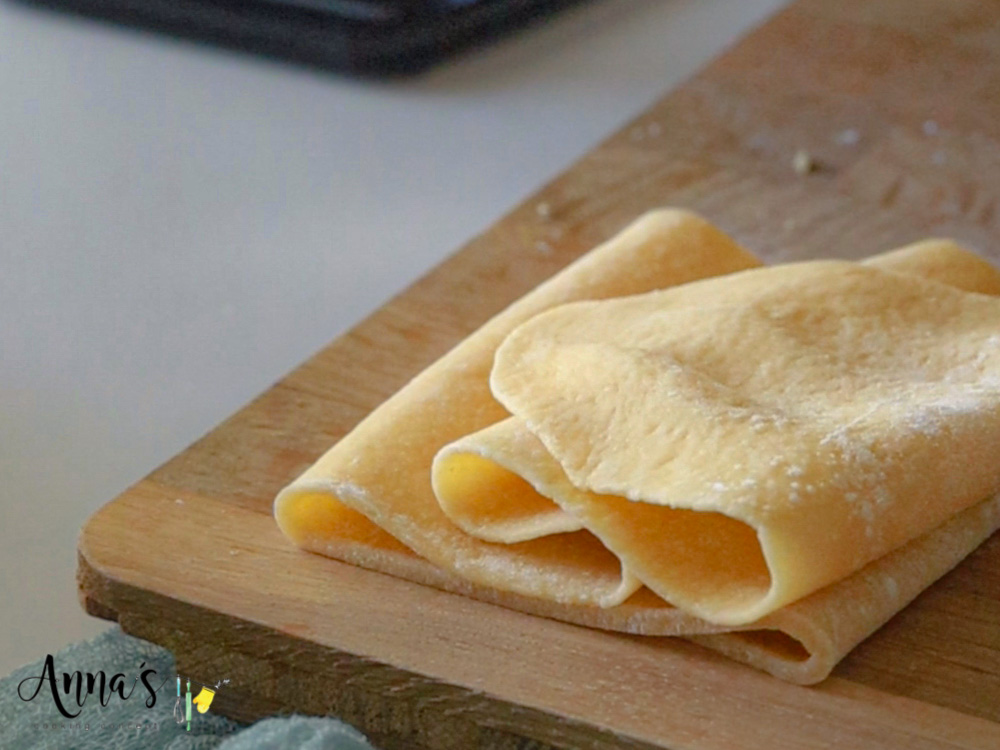
😋😋👍👍👍👍👍👍👍👍🍽️🍽️🍽️🍽️🍽️🍽️🍽️🍝🍝🍝🍝🍝🍝🍝🍝🍝